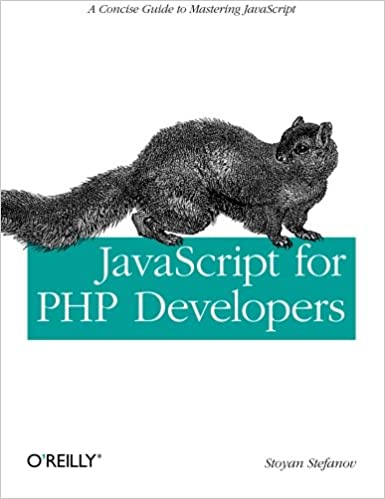2010 update:
Lo, the Web Performance Advent Calendar hath moved
Dec 20 This article is part of the 2009 performance advent calendar experiment. Today's article is a second contribution from Ara Pehlivanian (here's the first).
There's a Belorussian translation provided by Patricia. Thanks!
 Ara Pehlivanian has been working on the Web since 1997. He's been a freelancer, a webmaster, and most recently, a Front End Engineer at Yahoo! Ara's experience comes from having worked on every aspect of web development throughout his career, but he's now following his passion for web standards-based front-end development. When he isn't speaking and writing about best practices or coding professionally, he's either tweeting as @ara_p or maintaining his personal site at http://arapehlivanian.com/.
Ara Pehlivanian has been working on the Web since 1997. He's been a freelancer, a webmaster, and most recently, a Front End Engineer at Yahoo! Ara's experience comes from having worked on every aspect of web development throughout his career, but he's now following his passion for web standards-based front-end development. When he isn't speaking and writing about best practices or coding professionally, he's either tweeting as @ara_p or maintaining his personal site at http://arapehlivanian.com/.
There's an odd phenomenon underway in the JavaScript world today. Though the language has remained relatively unchanged for the past decade, there's an evolution afoot among its programmers. They're using the same language that brought us scrolling status bar text to write some pretty heavy duty client-side applications. Though this may seem like we're entering a Lada in an F1 race, in reality we've spent the last ten years driving an F1 race car back and forth in the driveway. We were never using the language at its full potential. It took the discovery of Ajax to launch us out of the driveway and onto the race track. But now that we're on the track, there's a lot of redlining and grinding of gears going on. Not very many people it seems, know how to drive an F1 race car. At least not at 250 mph.
The thing of it is, it's pretty easy to put your foot to the floor and get up to 60 mph. But very soon you'll have to shift gears if you want to avoid grinding to a halt. It's the same thing with writing large client-side applications in JavaScript. Fast processors give us the impression that we can do anything and get away with it. And for small programs it's true. But writing lots of bad JavaScript can very quickly get into situations where your code begins to crawl. So just like an average driver needs training to drive a race car, we need to master the ins and outs of this language if we're to keep it running smoothly in large scale applications.
Variables
Let's take a look at one of the staples of programming, the variable.Some languages require you to declare your variables before using them, JavaScript doesn't. But just because it isn't required doesn't mean you shouldn't do it. That's because in JavaScript if a variable isn't explicitly declared using the 'var' keyword, it's considered to be a global, and globals are slow. Why? Because the interpreter needs to figure out if and where the variable in question was originally declared, so it goes searching for it. Take the following example.
function doSomething(val) { count += val; };
Does count have a value assigned to it outside the scope of doSomething? Or is it just not being declared correctly? Also, in a large program, having such generic global variable names makes it difficult to keep collisions from happening.
Loops
Searching the scope chain for where count is declared in the example above isn't such a big deal if it happens once. But in large-scale web applications, not very much just happens once. Especially when loops are concerned. The first thing to remember about loops, and this isn't just for JavaScript, is to do as much work outside the loop as possible. The less you do in the loop, the faster your loop will be. That being said, let's take a look at the most common practice in JavaScript loops that can be avoided. Take a look at the following example and see if you can spot it:
for (var i = 0; i < arr.length; i++) { // some code here }
Did you see it? The length of the array arr is recalculated every time the loop iterates. A simple fix for this is to cache the length of the array like so:
for (var i = 0, len = arr.length; i < len; i++) { // some code here }
This way, the length of the array is calculated just once and the loop refers to the cached value every time it iterates.
So what else can we do to improve our loop's performance? Well, what other work is being done on every iteration? Well, we're evaluating whether the value of i is less than the value of len and we're also increasing i by one. Can we reduce the number of operations here? We can if the order in which our loop is executed doesn't matter.
for (var i = 100; i--; ) { // some code here }
This loop will execute 50% faster than the one above because on every iteration it simply subtracts a value from i, and since that value is not "falsy," in other words it isn't 0, then the loop goes on. The moment the value hits 0, the loop stops.
You can do this with other kinds of loops as well:
while (i--) { // some code here }
Again, because the evaluation and the operation of subtracting 1 from i is being done at the same time, all the while loop needs is for i to be falsy, or 0, and the loop will exit.
Caching
I touched briefly on caching above when we cached the array length in a variable. The same principle can be applied in many different places in JavaScript code. Essentially, what we want to avoid doing is sending the interpreter out to do unnecessary work once it's already done it once. So for example, when it comes to crawling the scope chain to find a global variable for us, caching it the reference locally will save the interpreter from fetching it every time. Here, let me illustrate:
var aGlobalVar = 1; function doSomething(val) { var i = 1000, agv = aGlobalVar; while (i--) { agv += val; }; aGlobalVar = agv; }; doSomething(10);
In this example, aGlobalVar is only fetched twice, not over a thousand times. We fetch it once to get its value, then we go to it again to set its new value. If we had used it inside the while loop, the interpreter would have gone out to fetch that variable a thousand times. In fact, the loop above takes about 3ms to run whereas if avg += val; were replaced with aGlobalVar += val; then the loop would take about 10ms to run.
Property Depth
Nesting objects in order to use dot notation is a great way to namespace and organize your code. Unforutnately, when it comes to performance, this can be a bit of a problem. Every time a value is accessed in this sort of scenario, the interpreter has to traverse the objects you've nested in order to get to that value. The deeper the value, the more traversal, the longer the wait. So even though namespacing is a great organizational tool, keeping things as shallow as possible is your best bet at faster performance. The latest incarnation of the YUI Library evolved to eliminate a whole layer of nesting from its namespacing. So for example, YAHOO.util.Anim is now Y.Anim.
Summary
These are just a few examples of how to improve your code's performance by paying attention to how the JavaScript interpreter does its work. Keep in mind though that browsers are continually evolving, even if the language isn't. So for example, today's browsers are introducing JIT compilers to speed up performance. But that doesn't mean we should be any less vigilant in our practices. Because in the end, when your web app is a huge success and the world is watching, every millisecond counts.




